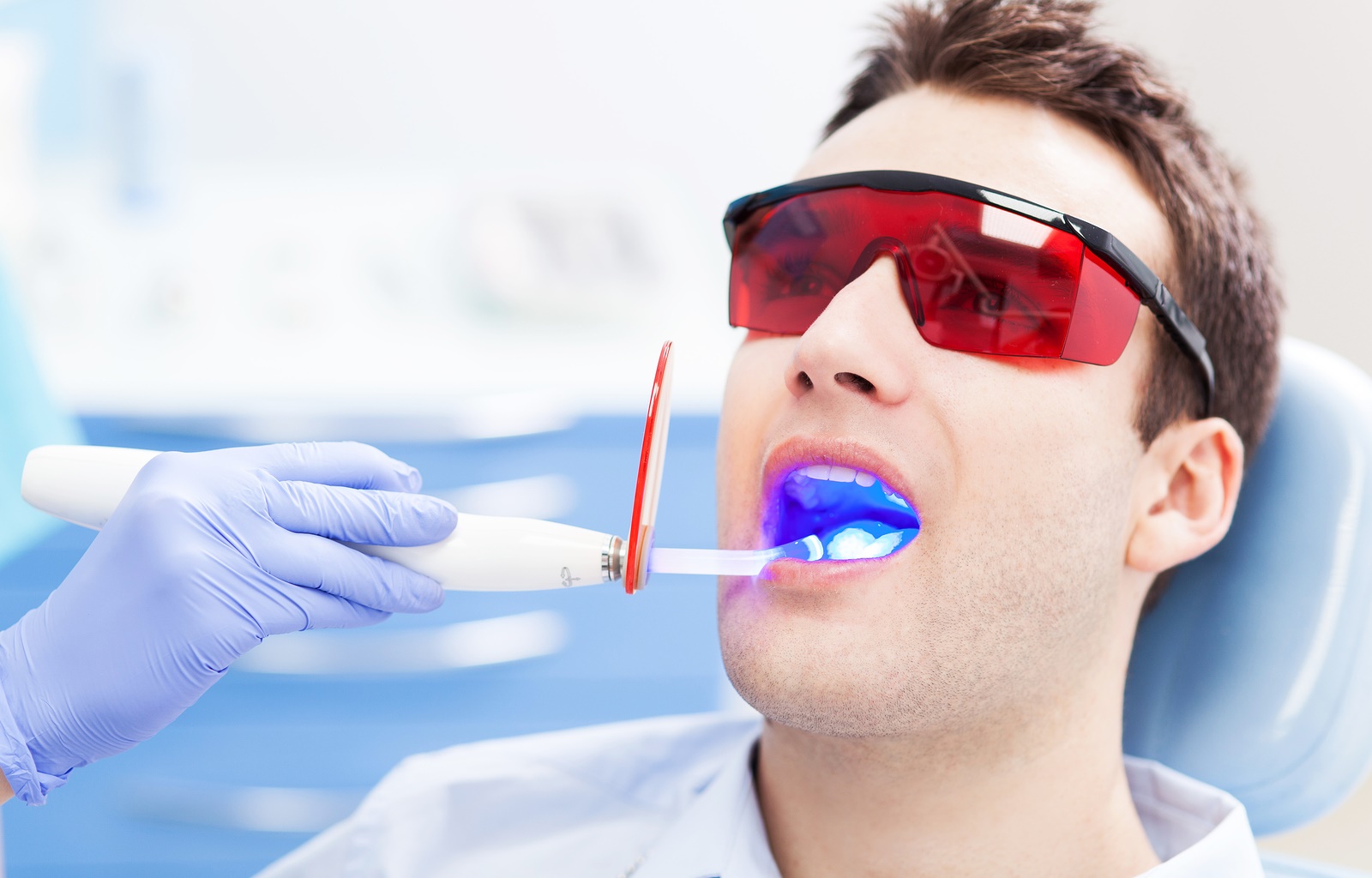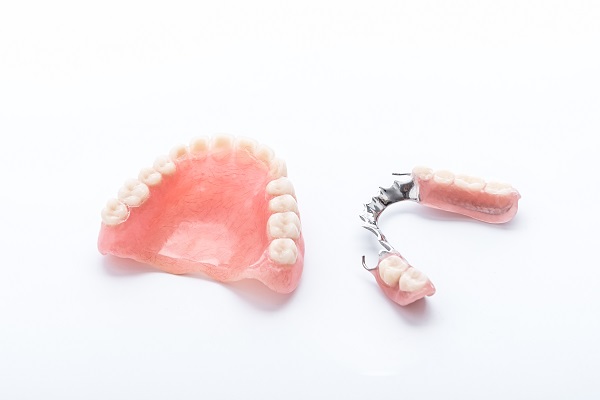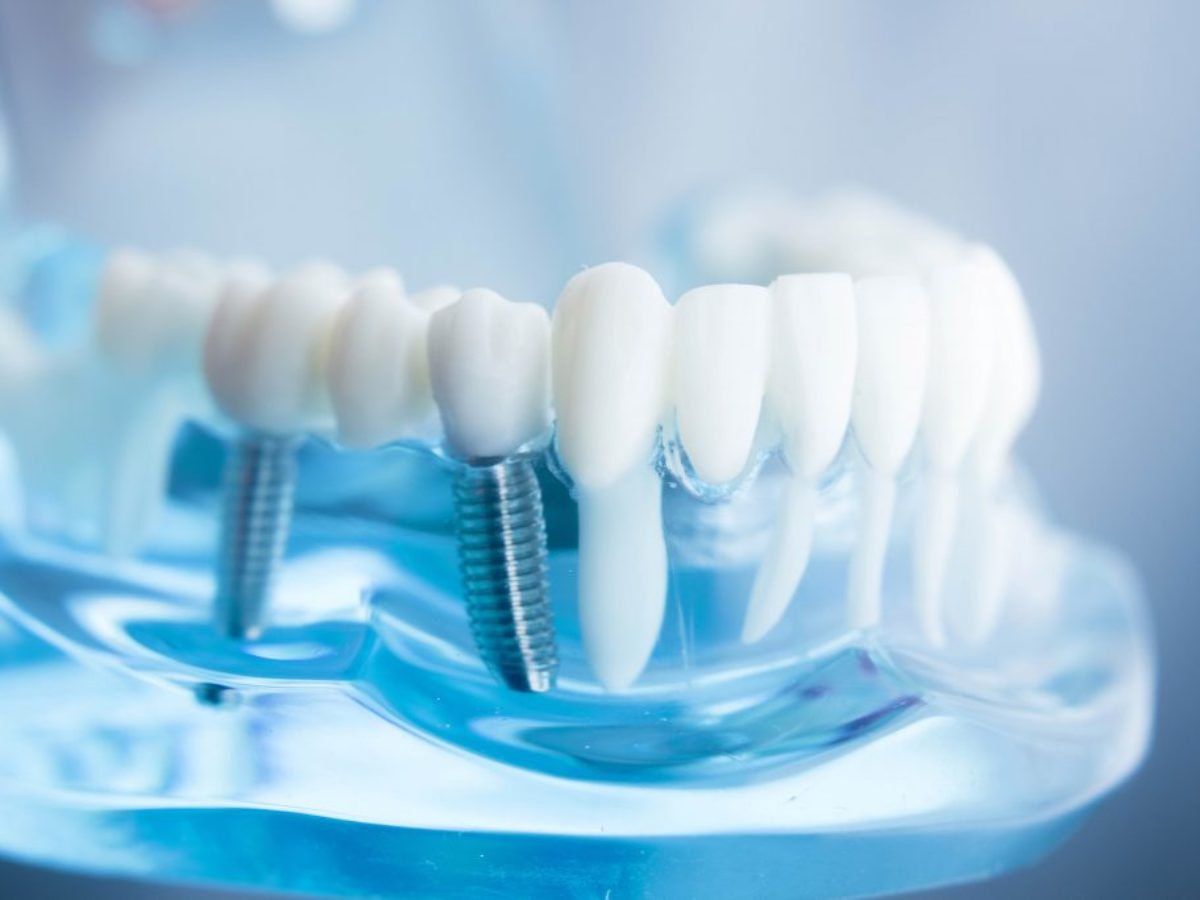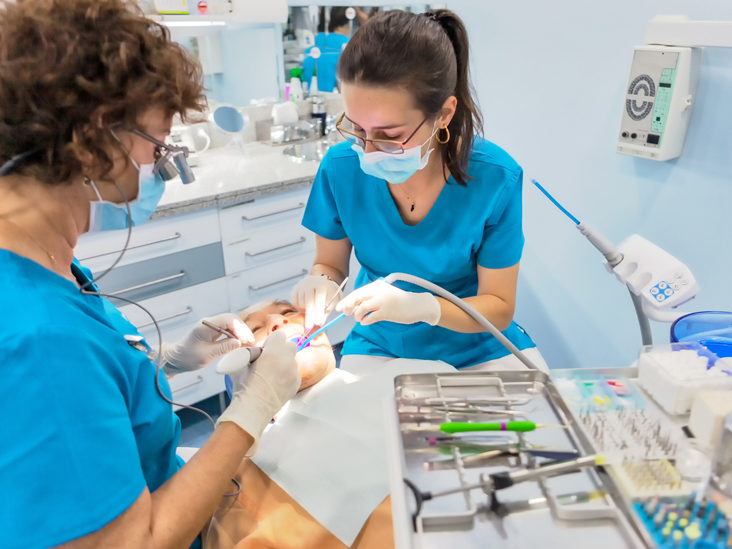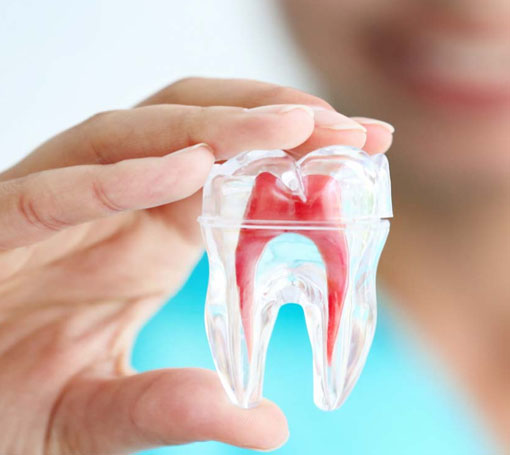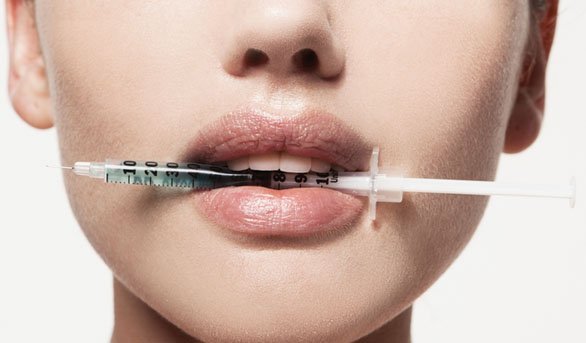Depending on its severity, gum disease can be treated using a variety of methods. Treatments range from regular dental cleanings, non-surgical periodontal therapies, to fully restoring the supportive tissues around the tooth via surgery. We always start with the least invasive procedure feasible for the patient to try and remedy each individual’s periodontal situation.
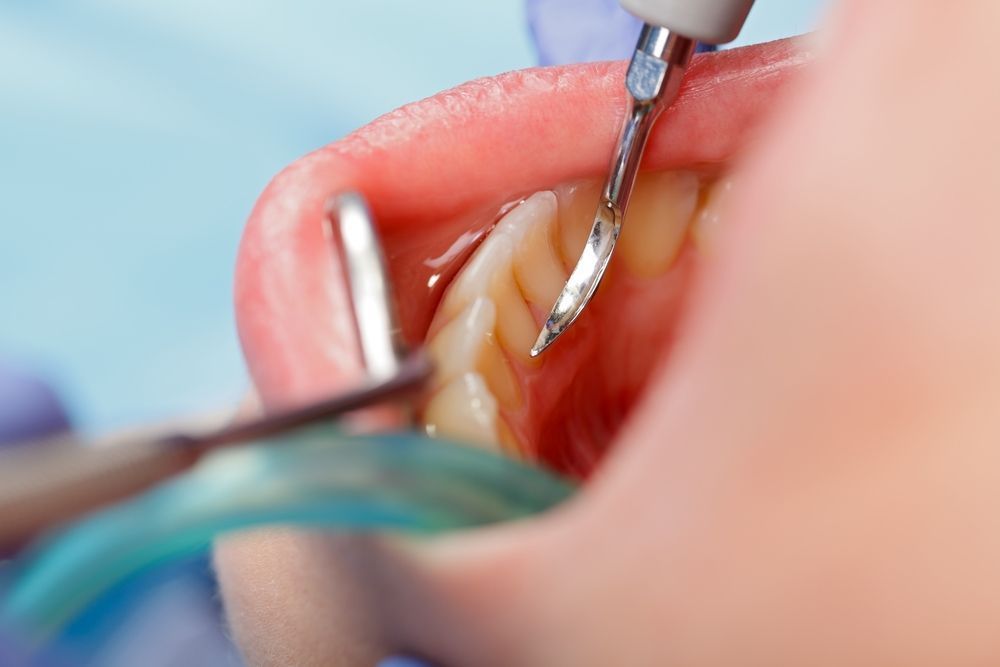
Maintenance and treatments for periodontal health include:
- Professional Dental Cleaning
Professional dental cleanings are performed during a routine dental checkup and are your first line of defense in preventing periodontal disease. In the dental world, we consider this to be a ‘healthy mouth cleaning’; meaning that the patient is free from periodontal disease. The dentist or dental hygienist removes the accumulated plaque and tartar from above and only slightly below your gum line in this procedure. If done twice a year, it prevents the plaque bacteria from developing and accumulating into calculus or tartar, which is the main cause of periodontal disease.
- Non-Surgical Periodontal Therapy
Non-surgical periodontal therapy is also known as scaling and root planing, which is a deep cleaning of your teeth below the gumline. A dentist or hygienist will numb the areas to be treated and then remove the hardened plaque and tartar from below and above the gum line using specialized instruments in this procedure. They smooth out the rough spots on the teeth that accumulate bacteria to help the gums reattach to the teeth and reduce inflammation. Your dentist will likely recommend products for you to use at home on a regular basis, such as specialized brushes, tools to help you clean in hard-to-reach areas, and prescription rinses and pastes to fight the bacteria and protect the roots of the teeth.
- Periodontal Maintenance
Being diagnosed with periodontal disease is like being diagnosed with diabetes, once you have it, it never goes away. After a patient has had non-surgical periodontal therapy performed, the hygienist will likely recommend a more frequent cleaning schedule in order to prevent the bacteria that cause perio disease from building up. Unlike a normal, preventative cleaning, periodontal maintenance is a therapeutic treatment prescribed to combat periodontal disease. This involves a partnership between the patient and the hygienist with both doing their parts. You must be diligent with your personal home care routine and maintain your regular perio maintenance appointments with your hygienist.
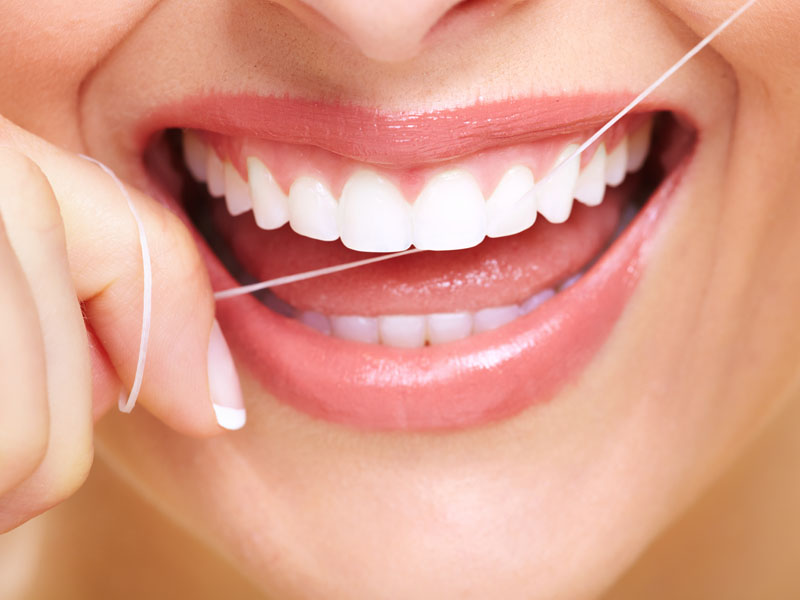
- Gingival Flap Surgery or Pocket Reduction Surgery
In this procedure, the tartar accumulations are too deep below the gumline for non-surgical periodontal therapy to be successful. The dentist must lift the gum in order to access and remove the tartar. Once the surgery is completed, the dentist lays and sutures the gum back in place so that it can reattach to the teeth. With this method, the harmful bacteria are eliminated from beneath the gums and the progression of gum disease is prevented. After undergoing this procedure, it will likely be recommended to visit more frequently for periodontal maintenance procedures in the future in order to control the disease, that is unless it is isolated to a single tooth due to other reasons.
- Gum Grafting
For this procedure, the dentist uses a fragment of your own gums or a synthetic replacement to restore the parts of the gums that are damaged by periodontal disease, aggressive brushing, or other traumas. A specialist, such as a Periodontist, usually performs this procedure.
- Laser Treatments
Lasers can also be used to treat periodontal disease. Traditional gum surgery involves incisions and sutures, often leaving visible changes to your gums, which may affect your smile. According to some studies, laser treatment offers similar results as other non-surgical options and it is a minimally invasive option that leaves your gum tissue uncut and unscarred. Laser periodontal therapy uses a small laser fiber, only as wide as three human hairs, to target bacteria and infected tissue, while not affecting healthy tissue. There is no bleeding or sutures, because no incisions are made.
Sometimes, gum disease may only need to be treated using non-surgical therapy. However, when the tissues around the teeth are affected by moderate to severe periodontal disease and cannot be treated with non-surgical options, the dentist must perform surgery to treat the gums and make them healthy enough to prevent bone loss.
Periodontal infections do not have any significant symptoms in their early stages. Hence, they can go unnoticed for a very long time. That is why it is advisable to visit your dentist regularly for routine dental checkups, to identify and address gum disease early on before it leads to tooth loss.
Before undergoing any of the above-discussed treatments, our dentists will explain all the pros and cons of each treatment thoroughly. This way, you will be fully confident in the procedure.
With over 30 years of experience offering exceptional dental services to our community, at Cheyenne Mountain Dental Group, we are still continuing our journey, under the leadership of Dr. Stephen Davis along with Dr. Bill Bertsch. For more details and appointments, call us at (719) 576-3276, book online, or visit us directly at 3605 Star Ranch Rd, Colorado Springs, CO 80906.








